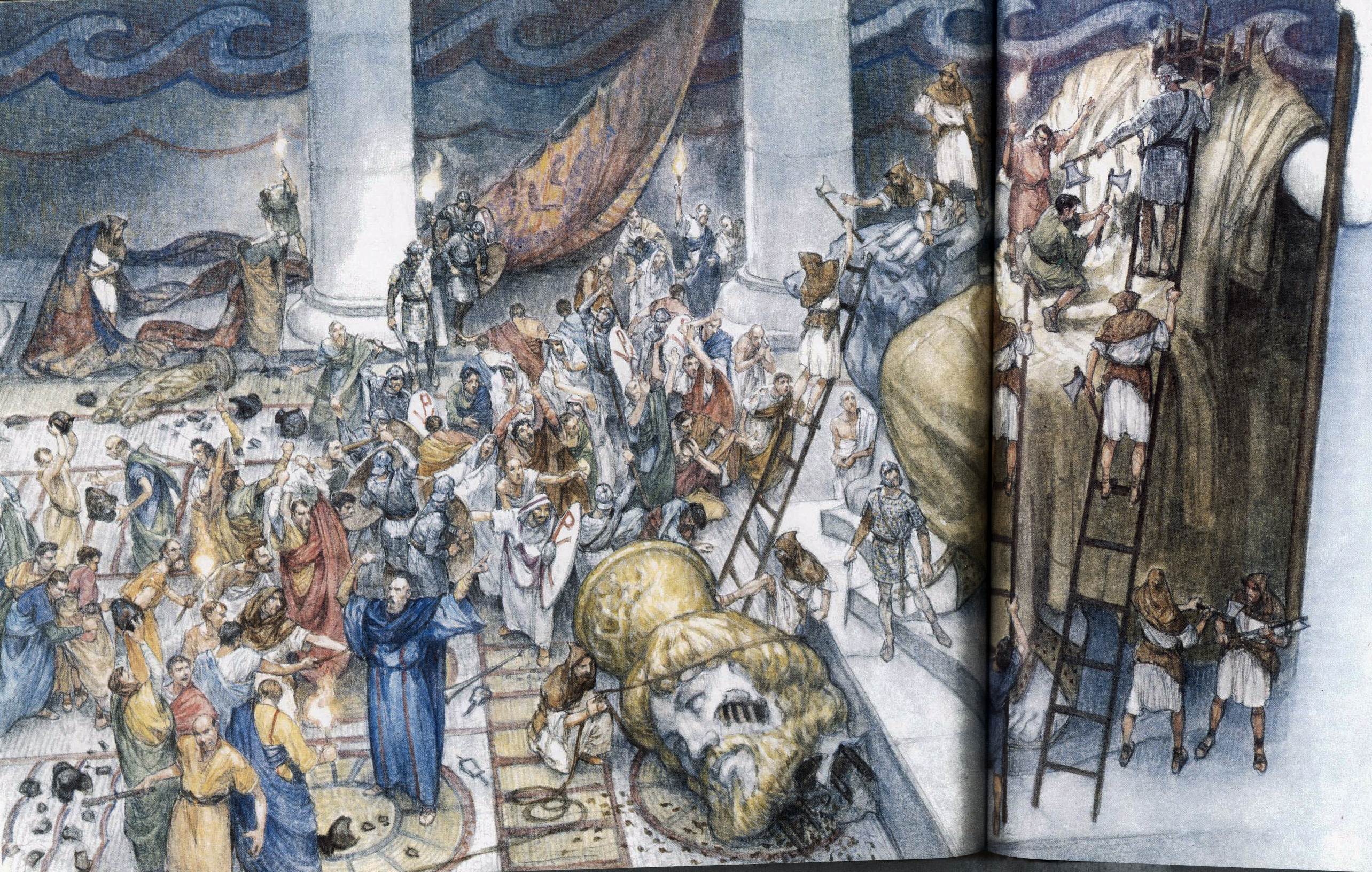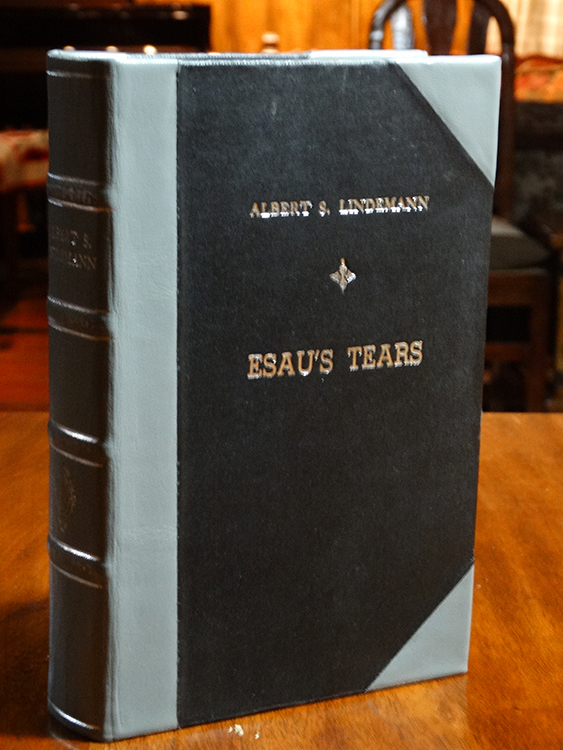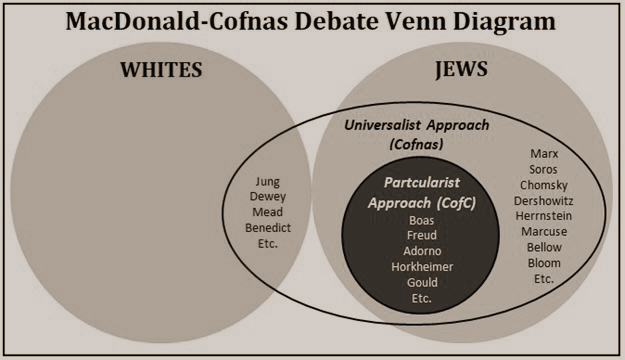
A book review by Thor Magnusson:
Sometimes a book comes along that changes the way we think. Sometimes a book comes along that changes the way we act. Sometimes a book comes along that changes the way we think and the way we act. Such a book was Hellstorm–The Death of Nazi Germany, 1944-1947.
That masterpiece by Thomas Goodrich changed forever not only how we would view World War Two, but it changed how we would view the world itself. For the first time since it happened, because of one bold and breath-taking book, the scales fell from our eyes and we were finally able to see free and unfettered what the abomination called World War Two was really all about.
Swept forever into a dark, dirty corner was the filth and disease of seventy years of Jewish propaganda, seventy years of Jewish lies about the so-called “Good War” and the so-called “Greatest Generation,” seventy years of Jewish mendacity about who was bad and who was good. Suddenly, overnight, replacing those lies was an honest, impartial, unbiased, but driving, relentless, and utterly merciless account of the fate that befell Germany in 1945.
As incredible as Hellstorm was, is, and will always remain, we now know it was only half the story. While the bloody obscenity that was World War Two was being acted out against a largely helpless German population by as evil a cast of creatures as ever haunted any hell anywhere, a similar horror show was taking place on the far side of the globe. And what is revealed in Tom Goodrich’s latest book, Summer, 1945–Germany, Japan and the Harvest of Hate, is a story so savage and sadistic as to numb the senses.
While some of the events described in Summer, 1945 will be familiar to readers of Hellstorm, many will not. Clearly, the author did a vast amount of new research for this new book since much material is previously unknown, especially regarding the contributions of the “Greatest Generation” to its already ghastly list of war crimes against Germany. In fact, what was previously revealed about the Americans in Hellstorm, horrific as it was at the time, was only the faintest foretaste of what was to come in Summer, 1945. For example…
Massive, monstrous, staggering as was the scale of Red Army rape in Germany, it now seems clear that the Americans were not far behind, if behind they were at all. Simply put: No one in control cared. Far from trying to halt the nonstop sexual attacks that their men committed against helpless German females, US officers, like Soviet officers, either ignored them, laughed at them, or actively encouraged them. Upon entering their communities, American officers forced Germans to write the age and sex of all occupants in their homes, then ordered the lists nailed to doors.
“The results are not difficult to imagine,” said one horrified priest from a village where women and children were soon staggering to the local hospital after the predictable sexual assaults commenced. Some US generals even blamed the victims themselves for their own gang rape when they dared leave their homes to beg for food. Lt. General Edwin Clarke went further when he announced that the thousands of rape reports in his area were nothing more than a conspiracy by die-hard Nazis to belittle and embarrass his well-behaved and totally innocent troops.
Clarke apparently believed that the hundreds of thousands of beaten, bruised and bleeding women and children were all liars with self-inflicted sex wounds. Also, to drive home German defeat, it was noted that GIs were being ordered by their “political officers” to make the gang rapes as public as possible. Although such brutal attacks were already common on streets and sidewalks, in schools and shops, an audience of family members was the preferred crowd for gang rape. Forcing German men to watch was also favored by the Americans, just as it was by their communist comrades.
Another hideous American war crime, a despicable act of hate and savagery, was the cold-blooded murder of SS and Wehrmacht soldiers the moment they surrendered their weapons. “You will not accept the surrender of any German SS,” announced one American general, demonstrating his commitment to barbarity and a criminal contempt for the Geneva Convention. By the tens of thousands these German soldiers, some of the best fighters the world had ever seen, were shown no mercy by the cowardly US murderers. In one massacre alone over seven hundred SS men were murdered in a matter of minutes; in another massacre, five hundred died, and so on.
“The Americans forced the Germans to walk in front of them with raised hands,” said an eyewitness regarding one group of fifty. “Then they shot the prisoners in their heads from behind.”
Additionally, the unbelievably sick and sadistic torture camps operated by the US Army and European Jews in Germany and Poland was on a psychopathic scale beyond belief. Well over a hundred thousand German men, women and even children suffered brutal deaths in these nightmarish torture pens. One might have imagined, and one would have certainly hoped, that after Hellstorm nothing more could have possibly been added to this perfectly hellish script of torture—victims buried alive, women forced to lay with and kiss rotting corpses–but one would have imagined wrong.
Those few who survived these demonic camps where dying was a thing to be postponed, not hurried, could no longer be called human. Of virtually all German men and boys who somehow survived to reach home, it was noticed all had their reproductive organs destroyed beyond repair.
But horrific as the so-called “peace” in Germany was, perhaps the greatest revelations for readers of Summer, 1945 come in the war chapters devoted to Japan. From the first page forward we readers, especially we Americans readers raised on the mythology of the “Dirty Jap,” will find our world of make believe turned upside down and inside out. Winners do write the history. And never was this more apt and terribly illustrated than in the case of America’s victory over Japan.
With the possible exception of the so-called Jewish “Holocaust,” one of the greatest lies to emerge from WWII and survive for over seventy years in tact, is the one we have been told over and over ever since December 7, 1941, viz., that the Japanese soldier was a mindless, murderous automaton, that he would never surrender, that he would always fight to the death, that he “lived to die” for the Emperor, that suicide was his second nature, and so on. There is no truth to any of these fairy-tales. Such a revelation as I have just stated here should not have come as any great surprise to anyone when they think about it, but it did come as a great shock to me and it will to everyone else, I am sure. When one has been told a “truth” such as this about the “robotic” Japanese soldier, a truth told for so many years from so many sources, one simply believes it as totally, completely and mindlessly as they believe in the Jewish Holocaust or that night follows day. After reading a few pages of Summer, 1945, however, it will be very clear to everyone that never was there a greater falsehood.
While reading what the opposing sides thought, in their own words, it is quickly clear that emotionally there was no appreciable difference between what a Japanese eighteen-year-old wanted and what an American eighteen-year-old wanted. First and foremost, both wanted to live. Both wanted to survive the war so that each might return home and marry that girl they loved so much, to have kids, to get a good job, to buy a car, to raise a small garden, to play in the backyard with pets. The problem for the Japanese was that Americans were taking no prisoners. From the very first battle on Guadalcanal when frightened young Japanese began walking forward with their hands held high to surrender muttering the only English word they knew, “Mercy, mercy,” US Marines began mowing them down… all of them, not just an isolated few here and there… all of them. In countless testimonies, it is readily apparent that Japanese soldiers in hopeless situations would have gladly surrendered, by the thousands, if only they could. The hatred was so great, however, and the propaganda so virulent following President Franklin Roosevelt’s orchestrated attack at Pearl Harbor that American soldiers, sailors and airmen were simply taking no prisoners, nor did the folks back home or their commanders want them to.
“You will take no prisoners, you will kill every yellow son-of-a-bitch, and that’s it,” yelled a marine colonel as he and his men were about to land on one island.
Thus, the manufactured belief after Pearl Harbor that the Japanese always fought to the death and never surrendered worked perfectly into the deep desire of Americans to kill the “sneaky Japs,” kill them all. And so, with no option now but to fight fanatically to the death, the Japanese did. And thus, it was a case where propaganda became a self-fulfilling truth.
Added to the merciless murder of helpless enemy soldiers was the torture and mutilation the Americans inflicted on those who were merely wounded. Ears, noses, fingers, toes, and other body parts were cut off the dead and dying for souvenirs; heads were hacked off and their “cured” skulls then sold to sailors or sent home to friends and family members; even Roosevelt received a letter opener carved from a Japanese arm bone.
“This is the sort of gift I like to get,” beamed the US president proudly.
The few Japanese who were in fact saved for interrogation were kept alive only as long as their information was useful, then they too were shot, bayoneted or pushed from flying aircraft.
Another falsehood that has existed as fact for the past seventy years is that the US military conducted itself properly during the occupation of Japan and helped the defeated nation gently back to its feet during peace. Again, nothing could be further from the truth. From the day they arrived, the Americans took ruthless control of what little remained of the destroyed nation. Women, children and the elderly were thrown into the streets and forced to shift among the ruins as best they could. At every available opportunity, Japanese men suffered humiliation and degradation and many were slapped, kicked and beaten in public “for fun.” All Japanese were treated like third-class citizens for years. Starvation stalked the land even before the conquerors arrived but though the Americans had a surplus to draw from food was denied to the people, just as it was in Germany. As a result, it is likely that millions perished during the first years of occupation. It was noticed that starving children were smaller in 1946 than they were in 1936.
Additionally, just as in Germany, rape reared its filthy head in “peace.” From the moment American troops came ashore on Saipan and Okinawa—two Japanese islands with large civilian populations–rape of females, and sometimes rape of males, began. And just as in Germany following its surrender, the violent sexual assaults in Japan continued unabated for years. No one in power, from General Douglas MacArthur down, was concerned in the least about the despicable, plague-like crime. Indeed, MacArthur was much more concerned with censoring the news of rape from the outside world than stopping rape in Japan itself. It is estimated that over a million Japanese women and children were raped after the war.
There are many other shocking revelations that might be lifted from this blistering book but then, after all, this is only a review of the book and not the book itself. Readers will have to discover the rest of this startling, riveting read for themselves. Truly, Summer, 1945 is aptly subtitled, “the harvest of hate.”
In closing, a few final thoughts on the author himself. Anyone who has read anything by Tom Goodrich knows that he is a passionate man who writes with great power, strength and scope. It is a trademark that sets him apart from others. But his books also reveal the inner-writer; a writer within who displays a large heart and soul. One senses early in a book that Goodrich actually cares about his subjects. There is, of course, the larger focus of each book, the “big picture,” but Goodrich never loses touch with the small, the fragile, the seeming insignificant, the all-but-forgotten.
A touching example is offered in Summer, 1945 when a Japanese adolescent, whose face has been melted beyond recognition by the atomic blast at Hiroshima, makes plans to kill herself rather than be chained for the remainder of her life to the face of a monster. Just as the child is about to commit the final act, she overhears in the next room her anguished father quietly discussing his daughter with her mother. Sadly agreeing that the child’s face is indeed hideous beyond belief, the man then states with both pain and love in each word that he loves his girl so much that her life, not her looks, is all that matters to him. Stunned, never imagining that anyone could ever love her again with such a terrifying face, the words of love were startling to the child, so startling that she suddenly realized that although death would indeed release her from a life of pain and shame, such a selfish act would only add to the heartbreak of her father. The girl matures to womanhood when she decides then and there to accept her fate, deal with her problems herself, and simply be thankful for the love that still blesses her life when so many others are now bereft of all.
Generally, to reach an honest and accurate understanding of an event such as World War Two, one must be so dedicated to the truth that they are prepared to plow through days, weeks, months, and years of dry, sterile material filled with tedious facts, figures and stats. Few of us have the time, patience or stamina for such research. Thankfully, there are those like Tom Goodrich who do have what it takes for the long haul. Ultimately, it is the “long haul” that delivers the details of history from which comes what we know as truth. Without our history, without our truth, we are nothing as a people.
That’s why our enemy is so determined to hide or distort our history; it is also why people like Tom Goodrich are so determined to retrieve our history. Discovering the truth of our history, even after decades of propaganda and lies, is what will ultimately set us free. These two books—Summer, 1945 and Hellstorm–have gone a very long way toward setting us free. And this is what makes Thomas Goodrich’s writing style so special. Almost in spite of ourselves, we sense the truth in his words. We, the readers, are drawn into a Goodrich book before we hardly know it. Truth is like that, like a strong magnet. A day or two later, when one emerges from the book—one “emerges” from a Tom Goodrich book, they never “finish” something that stays with them forever—they feel like they are different people; they have been to places that they never knew existed; they have gone to worlds that they were not supposed to go; they have gained knowledge and understanding that they were never meant to gain. And that, ladies and gentlemen, is an uncanny writing ability. We call it genius.
Summer, 1945—Germany, Japan and the Harvest of Hate has already taken its place with Hellstorm as one of the all-time most memorable and important books ever written, not just on World War Two, but on history in general. If that sounds biased, that’s because it is. We White Nationalists are extremely fortunate to have one of the world’s finest and most dedicated historians fighting on our side. People like Thomas Goodrich are why we are winning and why our victory is just a matter of time.
 Jesus radicalized a form of altruism. But here one must be very careful about precisely what kind of altruism Jesus radicalized. At first glance, it would appear that Jesus radicalized “love your neighbor”. Jesus did praise loving your neighbor, but “neighbor” can be ambiguous; somewhere between family and enemy. Insofar as “loving your neighbor”, in practical terms, amounts to loving your kin or your tribe (as opposed to enemies of your kin or tribe), radicalizing the love of kin or tribe would amount to advocating radical Jewish nationalism. Was this Jesus’s defining innovation, a morality of exclusive Jewish nationalism?
Jesus radicalized a form of altruism. But here one must be very careful about precisely what kind of altruism Jesus radicalized. At first glance, it would appear that Jesus radicalized “love your neighbor”. Jesus did praise loving your neighbor, but “neighbor” can be ambiguous; somewhere between family and enemy. Insofar as “loving your neighbor”, in practical terms, amounts to loving your kin or your tribe (as opposed to enemies of your kin or tribe), radicalizing the love of kin or tribe would amount to advocating radical Jewish nationalism. Was this Jesus’s defining innovation, a morality of exclusive Jewish nationalism?




